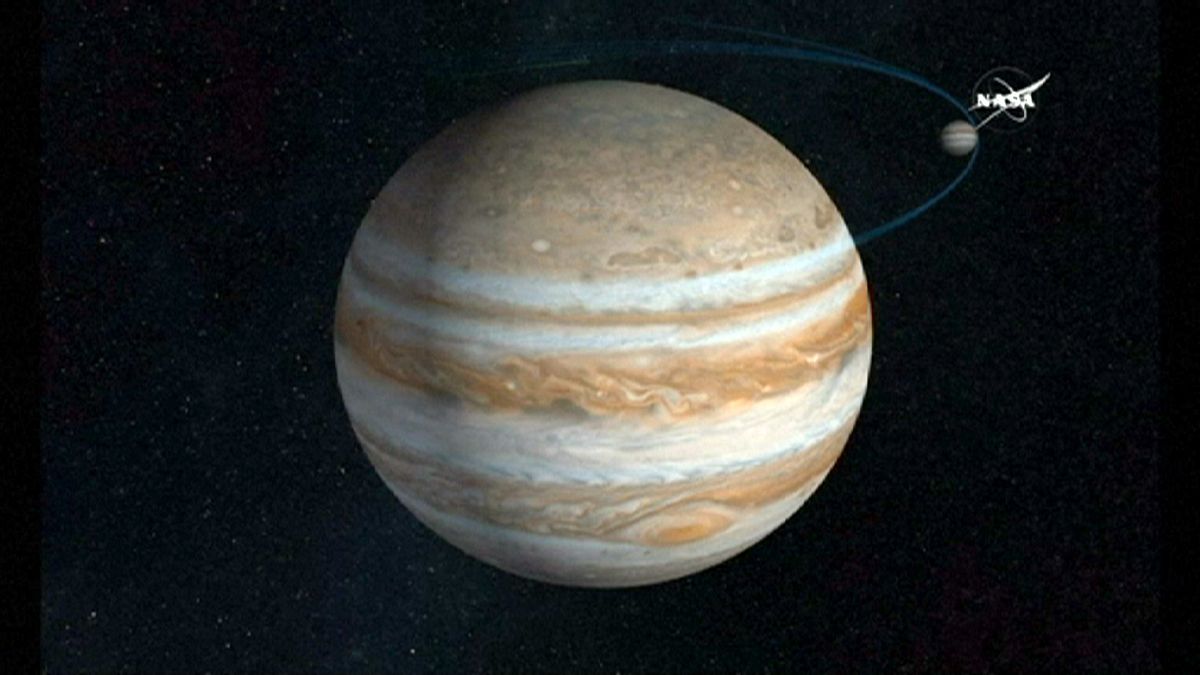NASA scientists have been celebrating confirmation of the arrival of the Juno probe at Jupiter.
“Welcome to Jupiter!” Three words to spark a mix of joy and relief. It was 3.53 GMT and scientists at the NASA centre in California celebrated confirmation of the arrival of Juno at Jupiter. Forty eight minutes earlier the probe had sent the signal that it had arrived.
The first images captured by the on board camera during 17 days of its journey to the giant gas planet became available. The probe will spend the next three months getting into position to begin studying what lies beneath Jupiter’s thick clouds and mapping the planet’s gargantuan magnetic fields.
“You have multiple moons, the Galilean moons going around Jupiter and each one is going around at a different speed based on its distance away from the planet. I mean this is the king of our solar system and its disciples going around it. This is its representative of nature. This is how we look. That’s a mini solar system,” Scott Bolton, Juno Principal Investigator told a press conference.
Juno blasted off from Cape Canaveral almost five years ago becoming the second spacecraft to go to Jupiter after the NASA probe Galileo. Juno, say the scientists is likely to discover much more than its predecessor.
After a 2.7 billion kilometre trek through space the 3.6 ton spacecraft which is powered by solar energy should be in position for its first close up images of Jupiter at the end of August when its instruments will be turned on for a test run.
At the start of October it’s planned the probe will fly in egg- shaped orbits each one lasting fourteen days. Its instruments will start to measure how much water is in the atmosphere.
That’s a key yardstick in working out how far away from the sun the planet was formed. It’s hoped Juno will reveal many other facts about Jupiter which have remained an enigma.
Jeremy Wilks Euronews correspondent reported: “Scientists are really excited about the Juno mission because of the orbit. The fact is it is going to fly down really quite close to the surface of this gas giant, and that is going to help us to understand what is inside.
‘At the moment we don’t know. Does it have a rocky core or is it gas all the way through? If you can understand Jupiter we are going to get to understand our solar system because this planet was formed only about 3 or 4 million years after the Sun, so it is one of the oldest objects of the solar system.”
In all its hoped the spacecraft will make 37 orbits around the planet and is expected to stay for 20 months. It will not return to earth and on its final orbit Juno will dive into Jupiter’s atmosphere where it will be crushed and vaporised.


